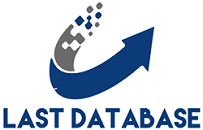If you find yourself hesitating, it’s essential to remember UAE Phone Number
that LinkedIn is a professional network where individuals seek connections and build relationships. Engaging in inbound sales is a natural part of fostering professional relationships, and users on the platform anticipate and even welcome such approaches. In fact, statistics reveal that “50% of B2B buyers rely on LinkedIn when making purchase decisions.”
Even so, there are dos and don’ts when it comes to prospecting on LinkedIn. Even though people are anticipating LinkedIn prospecting, you can still annoy them if you don’t do it right – and annoyed prospects are not viable prospects.
Cold Prospecting vs. Value Bombing
Cold prospecting and “value bombing” are two alternate ways of approaching people you don’t personally know on LinkedIn.
Cold prospecting is the modern equivalent of cold calling. It means contacting a person you don’t know to (tastefully) tell them more about your services. It has a bit of a bad reputation, but if you choose the right targets and the right approach, you can still see good results.
Others say the way to go is value bombing – contacting someone you don’t know purely to offer them something of value without expecting anything in return. It establishes trust and familiarity, which can provide a good basis for a professional relationship down the road.
There is no clear consensus on which approach is better, so the best idea is to aim for somewhere in the middle and take advantage of any open doors along the way.
Regardless of the approach you take, you should still follow these 13 best practices for sending cold prospecting messages on LinkedIn. Adopt the ones that work best for you, and be sure that when you prospect for new business, you’re on the good side of both your prospective new clients and the platform itself.
LinkedIn Cold Message Best Practices
1. Polish Your Profile
Before you even think about approaching someone, edit your own profile to make sure that once you do start attracting attention, it will have the desired outcome. Writing in the first person adds authenticity and believability to your profile. Word your bio and other profile messages to clearly explain exactly how your services are likely to help a potential client.
You can do this by thinking about “connecting the dots” when you write – show visitors how the services you offer can lead to the improvements they want in their business. Avoid talking about your skills in a generic way, or they won’t understand how negotiation training, for example, might help them land bigger deals.
Take these 7 steps to make sure you have an active, optimized LinkedIn profile:
1. Have a professional headshot taken.
Skip the funny pictures – according to LinkedIn data, profiles with photos get 21x more views and 36x more messages.
2. Write a killer headline.
Learn how to optimize your LinkedIn headline: tailor it to your audience, include your value proposition, use your prospect’s language and avoid hyperbole.
3. Write a short and sweet – yet impactful – bio.
According to Hootsuite, keep the following four pieces of information in mind: include what you’re passionate about, what brought you to the business, what you do in your current role and what your company does.
4. Publish original content to your profile.
To take full advantage of the heuristic and halo effect described by Fisher, update your profile regularly with interesting, original content. If you aren’t sure what to write, think about the questions your prospects ask you most frequently. Write up your answers in a helpful, non-commercial way to establish your authority within your field.
5. Share content from your Groups and your connections.
If you’re short on time (or aren’t a confident writer), you can achieve many of the same effects by sharing content from the Groups you participate in or the people you’re connected with. Sharing the content of prospects you’re trying to connect with has the added bonus of turning a cold contact into a warmer lead.

6. Turn off LinkedIn’s setting that allows you to view others’ profiles anonymously.
That way, your name will appear on prospect’s profiles before you do your cold outreach to them.
7.Request endorsements, but carefully.
Endorsements are clearly valuable, but don’t spam all of your connections with requests. Instead, wait until you’ve built relationships and established your value before you ask. If your requests aren’t panning out, many LinkedIn users find that you need to give endorsements to get them.
2. Beef Up Your Pulse Portfolio
Consider writing for LinkedIn Pulse, the in-network blogging platform. In addition to adding depth and interest to your profile (articles you’ve written show up there), it can also help establish your professional reputation and expertise. It also brings new eyes to your profile without the need for active prospecting.
3. Think About Going Premium
It’s not an insignificant investment, but upgrading to LinkedIn’s premium tier can be helpful. There are four options to choose from – Career, Business, Sales, and Hiring – and each offers slightly different benefits. People who are serious about prospecting will be most interested in the options that offer improved search features, more InMail messages, and better lead management tools, like Business and Sales.
4. Pick a Definitive Outreach Method
If you’re serious about using LinkedIn to grow your business, you may want to research a definitive outreach method. These methods are usually connected to a LinkedIn “guru,” and will provide you with a step-by-step prospecting process. It’s essentially “trust hacking,” which theoretically will lead to an easier time capturing leads.


